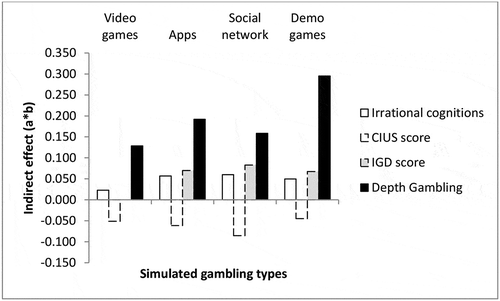Figures & data
Figure 1. Conceptual map of applied multiple mediator models with mediators (m) and predictor (x) assessed at T0 (SG = simulated gambling). Annotation: M9 an M10 (dashed boxes) were only included in the mediation models to predict problem gambling (y1 at T1), not to predict gambling onset (y2 at T1)

Table 1. Unstandardized effect sizes and 95% confidence intervals of mediation models to predict the sum score of problematic gambling after one year (N = 1,178)
Figure 2. Unstandardized effect sizes of substantial mediators, grouped by game type. Annotation: CIUS = Compulsive Internet Use, IGD = Internet Gaming Disorder

Table 2. Unstandardized effect sizes and 95%-confidence intervals of mediation models to predict onset of any gambling after one year (N = 531)
Table A1. 12-month-prevalence of online or offline gambling (n; % [95%-Confidence]). N = 1,905
Table A2. 12-month-prevalence of simulated gambling activities from home or via mobile device (n; % [95%-Confidence]). N = 1,905
Table A3. Bivariate Spearman-correlations between individual simulated gambling activities. N = 1,905 (unweighted data set)
